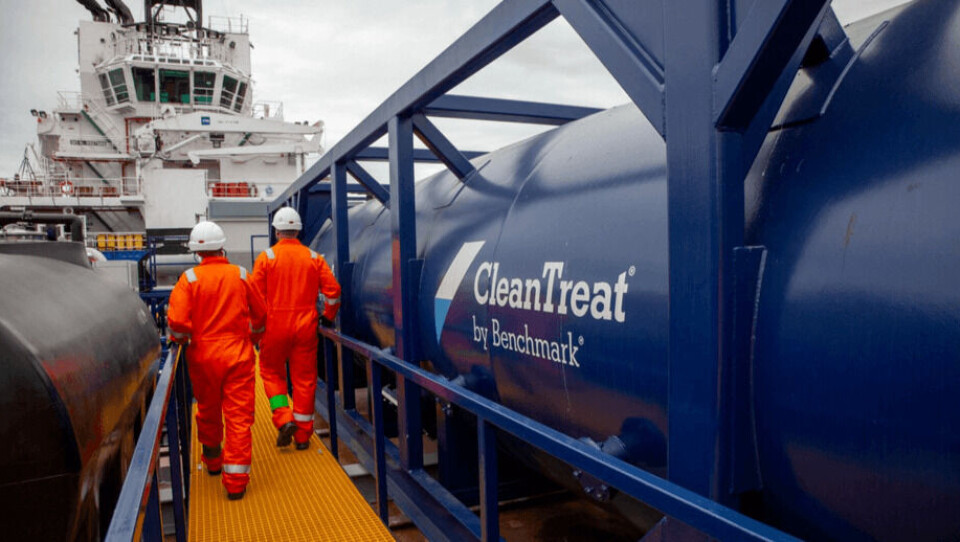
Benchmark gets go-ahead for double use of Ectosan baths
Aquaculture biotechnology company Benchmark has been granted permission to re-use the treatment water for its novel Ectosan Vet lice treatment for a second batch of fish.
Re-use is subject to water quality being maintained to the satisfaction of the prescribing veterinarian.
Permission for re-use comes from the Norwegian Medicines Agency (NoMA), which has granted an alteration to Benchmark’s Marketing Authorisation (MA) for Ecotsan, a lice treatment containing the neonicotinoid insecticide imidacloprid.
More efficient use
Benchmark said re-use means a producer will be able to treat a salmon farm more efficiently with a solution that it claims delivers more than 99% efficacy, promotes animal welfare, reduces mortality and protects the environment.
“This MA variation represents a further important step towards our goal of optimising the efficiency of our sea lice solution, and further trials are ongoing to support multiple re-use of treatment water,” added the UK-headquartered, Norwegian-owned company.

Important milestone
Chief executive Trond Williksen said: “We are very pleased to have been granted a variation to the Marketing Authorisation from the Norwegian Medicines Agency. This represents an important milestone for the company and for the industry.
“Ectosan Vet and CleanTreat is a much-needed solution for the industry which continues to show excellent results with efficacy above 99% as well as good operational efficiency. It is the first medicinal solution brought to the Norwegian market in over ten years which addresses one of the biggest challenges in salmon production, while improving animal welfare, reducing mortality and protecting the environment.”
Only Norway
Norway, the world’s biggest producer of farmed salmon, is currently the only country where Benchmark has licensed Ectosan Vet for use.
The lice treatment is carried out in a wellboat and must be used in conjunction with Benchmark’s CleanTreat system, which is said to remove all Ectosan residues as well as organic matter such as lice egg strings.























































